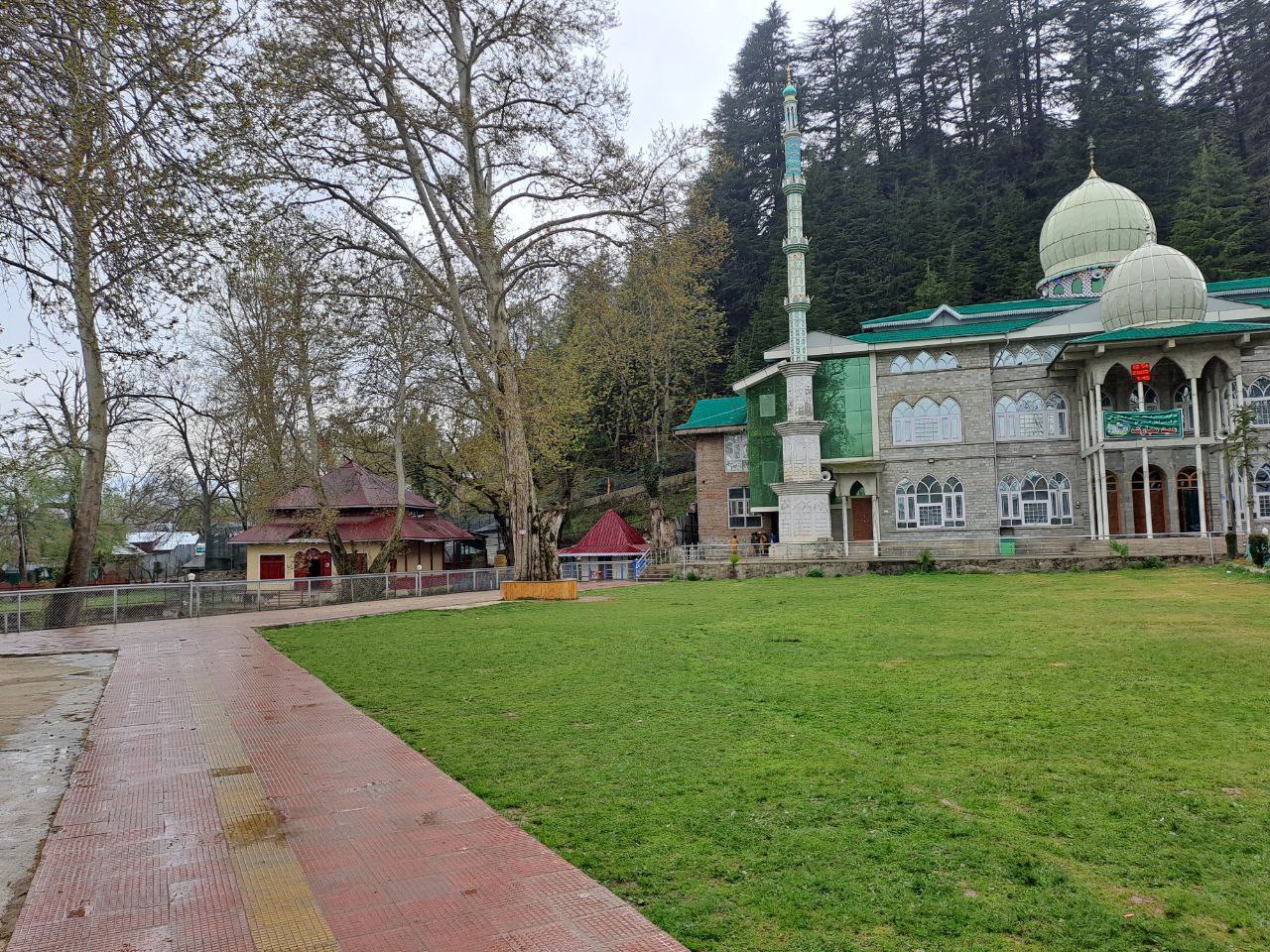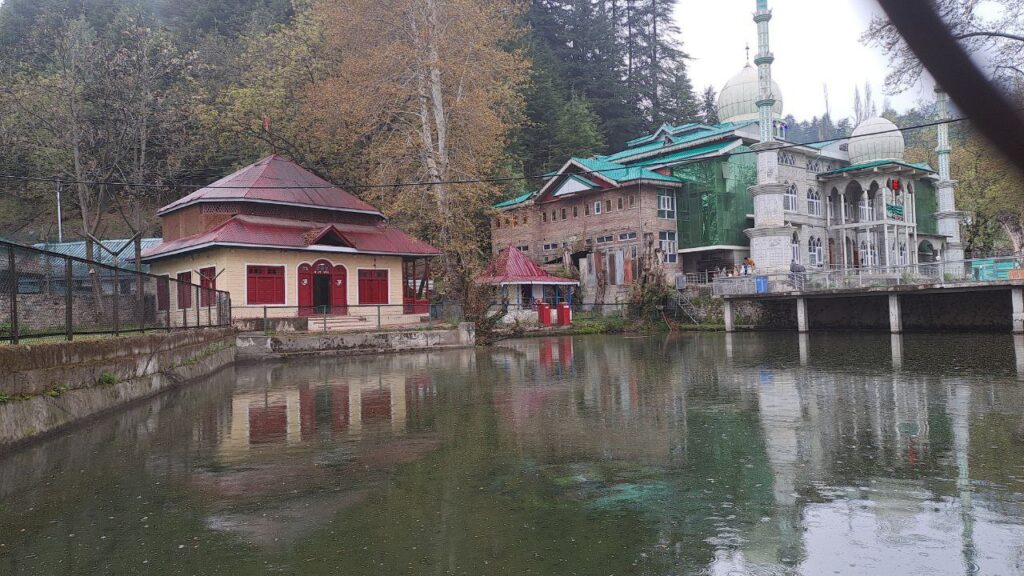As the muezzin gives Azan for the day’s prayers at Grand Masjid, the bells tinkle at the 400-year-old Shiv Mandir in the beautiful Trehgam village of Kupwara, located near the Line of Control on the international Indo-Pak boundary. It is yet another serene morning in this village, which is home to a rare eclectic blend of religious harmony. The courtyard houses a masjid, a Muslim holy shrine, and a temple.

A majestic view of the Grand Masjid, Shrine and Shiv Temple in village Trehgam of Kupwara district that have co-existed since times immemorial-Photo by writer
Pir Abdul Rashid, the Imam of the Grand Masjid (Jamia Masjid) Trehgam, says that all three places have coexisted since time immemorial, blessing the area with the rare distinction of being home to unity in diversity. Even during the testing times of the India-Pakistan partition in 1947, the area did not report any untoward incident.
Pir Abdul Rashid, the Imam, adds that for Trehgam’s people, the mosque and temple represent not just places of worship but also symbols of their shared cultural heritage. The residents of Trehgam have steadfastly upheld their commitment to communal harmony, living together peacefully and setting an example for the rest of the country.
He adds that these places of worship represent symbols of their shared cultural heritage. The residents of Trehgam have steadfastly upheld their commitment to communal harmony, living together peacefully and setting an example for the rest of the country.
The area celebrates Shivratri and Id with equal zest, dedication, and enthusiasm. All these days also mean brisk business for the market vendors who look forward to the religious congregations. A local merchant states that people here have continued to live together in peace and harmony, setting an example for the rest of the country.
Religious harmony has been a unifying factor among people of different faiths in this village. Although no Kashmiri Pandit families currently reside in the village, many of them revisit their roots and offer puja in the temple from time to time, adds nearby resident Nazir Ahmad (50 years old).
He adds that a large mosque and a Hindu temple in Trehgam hamlet exemplify communal peace. It is critical to acknowledge and celebrate such situations and work toward increasing their number. Besides the common yard, these places also share a water pond from which the mandir and masjid committees fetch water. This pond serves as a water source for dozens of villages. The locals feel blessed to live there as they receive fresh water from the pond, which requires no filtration.
Another area resident, Abdul Gaffar, 65, says that Kashmir is known to be a land of Sufis and saints and has a rich tradition of religious sync. It is a place where Muslims, Hindus, and Sikhs have lived together in harmony for centuries. Kashmir’s cultural and religious traditions are a blend of Islamic, Hindu, and Buddhist influences. He adds that such instances of peaceful coexistence go a long way in promoting unity and understanding among people of different faiths.
The history of religious places:
The foundation of the Grand Masjid near the centuries-old Shiv temple was laid by Syed Ibrahim Bukhari, who was believed to have come from the Middle East along with Mir Syed Ali bin Shahab-ud-Din Hamadani via the Hindukush Mountains. The Grand Masjid was built after the temple, and when the Sufi Saint Hazrat Syed Ibrahim Bukhari passed away, he was buried alongside it.
According to town elders, the decision to construct the two places of worship side by side aimed to promote communal harmony and brotherhood in the locality and send a message of peace and tolerance to the world.
Copy Edited by Megha Mann

